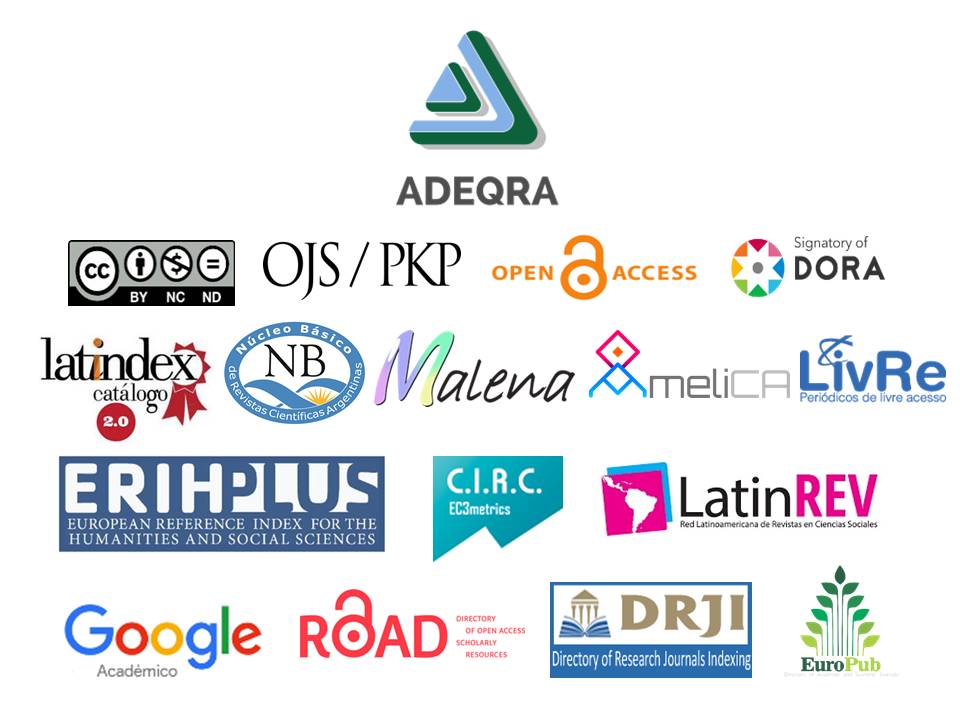QSAR-3D como herramienta abstracción en la enseñanza de la Química Medicinal
Palabras clave:
Química Medicinal, QSAR-3D, gráficosResumen
Este trabajo busca analizar los beneficios y dificultades de la implementación del QSAR-3D en la enseñanza de la química medicinal. Se tratará el contexto teórico tanto del método de QSAR-3D como de las bases pedagógicas que fundamentan esta intervención educativa. Los ejes más importantes son las limitaciones actuales en la capacidad de abstracción de los alumnos y las nuevas tecnologías que habilitan plantear un enfoque novedoso en un área de suma relevancia en la química medicinal. En particular se evalúa la factibilidad de realizar un experimento computacional de forma remota. También se revelan conexiones con otras subdisciplinas de la química para remarcar su valor como contenido transversal.
Citas
Ballante, F. y Ragno, R. (2012). 3-D QSAutogrid/R: An alternative procedure to build 3-D QSAR models. Methodologies and applications. Journal of chemical information and modeling, 52(6), 1674–1685. https://doi.org/10.1021/ci300123x
Cramer, R. D., Patterson, D. E. y Bunce, J. D. (1988). Comparative molecular field analysis (CoMFA). 1. Effect of shape on binding of steroids to carrier proteins. Journal of the American Chemical Society, 110(18), 5959–5967. https://doi.org/10.1021/ja00226a005
Hansch, C., Fujita, T. (1964). p-σ-π Analysis. A Method for the Correlation of Biological Activity and Chemical Structure. Journal of the American Chemical Society, 86(8), 1616–1626. https://doi.org/10.1021/ja01062a035
Johnstone, A. H. (1993). The development of chemistry teaching: a changing response to a changing demand. Journal of Chemical Education, 70(9), 701-705. https://doi.org/10.1021/ed070p701
Kubinyi, H. (1997). QSAR and 3D QSAR in drug design Part 1: methodology. Drug Discovery Today, 2(11), 457-467. https://doi.org/10.1016/S1359-6446(97)01079-9
Lorenzo, M. G. y Pozo, J. I. (2010). La representación gráfica de la estructura espacial de las moléculas: eligiendo entre múltiples sistemas de notación. Cultura y Educación, 22(2), 231-246. https://doi.org/10.1174/113564010791304555
Ragno, R., Esposito, V., Di Mario, M., Masiello, S., Viscovo, M. y Cramer, R. (2020). Teaching and Learning Computational Drug Design: Student Investigations of 3D Quantitative Structure–Activity Relationships through Web Applications. Journal of Chemical Education, 97(7), 1922-1930. https://doi.org/10.1021/acs.jchemed.0c00117
Robinson, S. y Sigman, M. (2020). Integrating Electrochemical and Statistical Analysis Tools for Molecular Design and Mechanistic Understanding. Accounts of Chemical Research, 53(2), 289–299. https://doi.org/10.1021/acs.accounts.9b00527
Talanquer, V. A. (2011). Macro, Submicro, and Symbolic: The many faces of the chemistry “triplet”. International Journal of Science Education, 33, 179 - 195. https://doi.org/10.1080/09500690903386435
Talanquer, V. A. (2018). Progressions in reasoning about structure-property relationships. Chemical Education Research and Practice, 19, 998-1009. https://doi.org/10.1039/C7RP00187H
Publicado
Cómo citar
Número
Sección
Licencia
Derechos de autor 2021 Dimas Ignacio Torres

Esta obra está bajo una licencia internacional Creative Commons Atribución-NoComercial-SinDerivadas 4.0.



